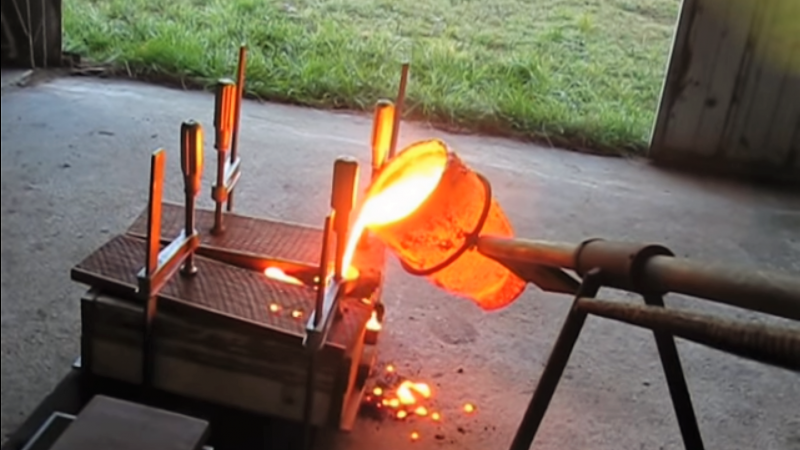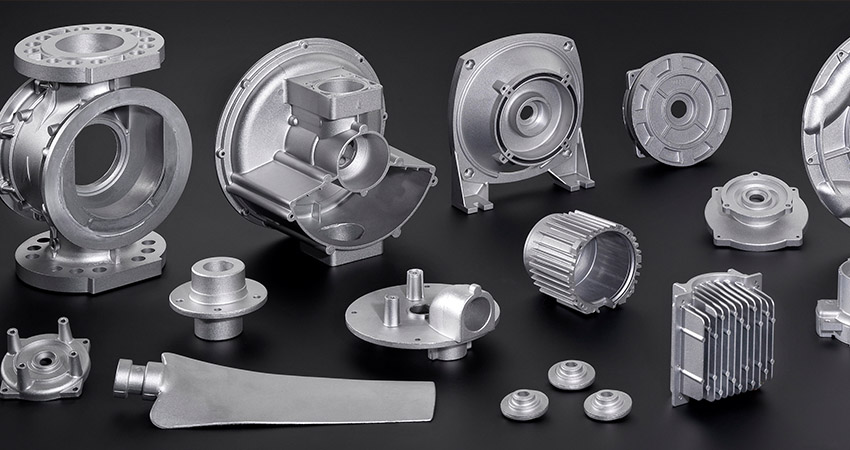Why a Casting Foundry is vital to the success of industrial projects
Comprehensive Guide to the Uses and Production Techniques in Light Weight Aluminum Factory Procedures
The considerable overview to aluminum foundry procedures offers essential understandings right into the varied applications of aluminum across various industries. It methodically checks out crucial production techniques, thawing procedures, and molding approaches that contribute to precision and quality. Furthermore, the overview highlights the relevance of finishing procedures that boost both mechanical properties and look. Comprehending these aspects is necessary for anybody associated with light weight aluminum manufacturing, questioning concerning finest methods and technologies in the field.
Introduction of Aluminum Casting Applications

In addition, the building and construction market gain from light weight aluminum spreadings in building elements and architectural components, offering toughness and resistance to deterioration. Consumer products, such as kitchenware and devices, likewise make use of aluminum spreadings for their warm conductivity and aesthetic charm. The electronic devices industry relies on aluminum for housings and warmth sinks, making sure efficient thermal administration. On the whole, aluminum spreading's adaptability allows it to fulfill diverse industry demands effectively, strengthening its value in contemporary manufacturing methods.
Secret Production Techniques in Light Weight Aluminum Shop
In the domain of aluminum factory operations, various manufacturing methods play a critical role in forming the end products that serve diverse sectors. aluminum casting company. Secret techniques include sand casting, die casting, and investment casting, each offering distinct advantages based upon the application requirements
Sand spreading makes use of a mixture of sand and binder to produce mold and mildews, permitting for complex geometries at lower prices. Die spreading, on the other hand, uses high-pressure injection of liquified aluminum into steel mold and mildews, ensuring precision and a smooth surface finish, ideal for high-volume production. Financial investment spreading provides extraordinary dimensional precision and surface top quality, making it ideal for complex designs.
In addition, strategies such as long-term mold and mildew spreading and gravity die casting better enhance the convenience of aluminum shop procedures (Casting Foundry). Each technique is selected based upon factors like production volume, part intricacy, and material residential properties, making sure positive outcomes throughout different applications
Thawing Processes and Temperature Level Control
Reliable melting procedures and precise temperature level control are essential for accomplishing optimal light weight aluminum foundry operations. The melting of aluminum normally entails numerous approaches, consisting of crucible melting, induction melting, and rotating melting, each with its very own advantages and applications. Crucible melting is generally utilized for small sets, while induction melting gives reliable heating and consistent temperature distribution.

Molding Methods for Precision Castings
Understanding molding strategies is vital for producing precision castings in light weight aluminum shop procedures. Different techniques, such as sand, investment, and die casting, play a critical function in attaining wanted resistances and surface finishes. Sand spreading, for example, uses a blend of sand and binder to develop molds, permitting big elements and elaborate styles. Financial investment casting, on the other hand, uses wax patterns that are covered in ceramic product, causing very described and precise forms. Pass away casting utilizes high-pressure shot of liquified light weight aluminum right into metal mold and mildews, making certain constant measurements and fast production rates.
Each technique has its benefits and is chosen based upon elements such as complexity, quantity, and mechanical residential properties required. Effective mold and mildew style, consisting of airing vent and gating systems, better boosts the high quality and precision of the finished item. Understanding these molding methods enables factories to fulfill details industry requirements and improve overall operational effectiveness.
Finishing Procedures to Enhance Light Weight Aluminum Parts
Ending up processes play an important function in enhancing the efficiency and appearances useful reference of light weight aluminum components. These procedures, which follow casting, purpose to improve surface high quality, corrosion resistance, and mechanical residential properties. Typical strategies consist of machining, which fine-tunes measurements and surface area finish, and sprucing up, which enhances aesthetic allure by developing a smooth, reflective surface area.
Anodizing is another substantial process, offering a long lasting oxide layer that shields against wear and corrosion while permitting color customization. Furthermore, powder finish supplies a wide variety of shades and surfaces, making certain both security and visual improvement.
Sometimes, parts may undertake shot blowing up to enhance and remove contaminations adhesion for succeeding coverings (aluminum foundry). In general, these completing procedures are essential for taking full advantage of the functionality and lifespan of light weight aluminum parts, making them appropriate for varied applications throughout numerous industries
Regularly Asked Concerns
What Precaution Are Required in Light Weight Aluminum Factory Workflow?
In light weight aluminum foundry procedures, important safety measures include individual safety devices, correct ventilation, fire avoidance procedures, regular tools maintenance, training for employees on risks, and maintaining clear emergency situation treatments to guarantee a secure workplace.
How Do Environmental Regulations Impact Aluminum Foundries?
Ecological guidelines substantially influence aluminum factories by applying criteria for discharges, waste administration, and resource usage. Compliance typically requires investments in cleaner innovations and procedures, eventually affecting operational costs and manufacturing performance within the sector.
What Job Opportunities Exist in Aluminum Factory Workflow?
Different career opportunities in aluminum foundry procedures include roles such as factory professional, mold and mildew designer, quality assurance examiner, procedure designer, and manufacturing manager, each adding to efficient manufacturing and innovative procedures within the market.
How Is Quality Assurance Achieved in Light Weight Aluminum Casting?
Quality assurance in aluminum spreading is accomplished via extensive evaluations, standardized screening treatments, and the use of advanced check out this site innovations. Regular tracking of temperature, make-up, and dimensional accuracy guarantees items fulfill specified criteria and client needs.
What Are the Usual Issues in Light Weight Aluminum Castings and Their Causes?
Typical problems in light weight aluminum castings consist of porosity, contraction, and surface roughness. Causes often stem from improper mold style, inadequate pouring methods, and contamination, impacting the general integrity and efficiency of the end product.
The extensive guide to light weight aluminum shop operations presents vital insights right into the varied applications of light weight aluminum across numerous industries. Aluminum spreading plays a necessary function in different industries due to its adaptability and desirable homes. Pass away spreading, on the other hand, utilizes high-pressure shot of molten aluminum into steel mold and mildews, making sure precision and a smooth surface finish, suitable for high-volume manufacturing. Additionally, why not try here techniques such as long-term mold and mildew spreading and gravity pass away casting even more enhance the convenience of light weight aluminum foundry procedures. Grasping molding techniques is essential for creating accuracy spreadings in light weight aluminum factory procedures.